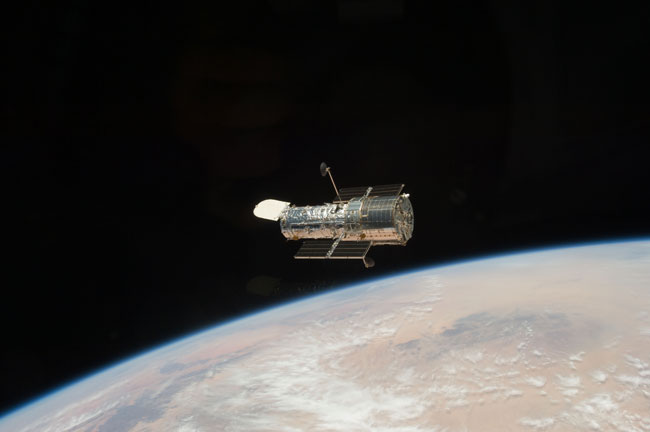
NASA is sorting through a variety of possible uses for a pair of powerful spy satellite telescopes that fell into the agency's lap last year.
In November, NASA asked scientists to suggest missions for the telescopes, which were donated by the U.S. National Reconnaissance Office (NRO) and are comparable in size and appearance to the famous Hubble Space Telescope.
More than 60 serious proposals came flooding in, the most promising of which were presented in early February at the Study on Applications of Large Space Optics (SALSO) workshop in Huntsville, Ala. [Declassified U.S. Spy Satellites (Gallery)]
"There was a lot of excitement in the scientific community when these were transferred to NASA, because they are world-class, Hubble-class telescopes, optics," said SALSO project manager George Fletcher, of NASA's Marshall Space Flight Center in Huntsville.
The two scopes were originally built to carry out surveillance missions under a multibillion-dollar NRO program called Future Imagery Architecture. But cost overruns and delays killed the program in 2005, and NASA announced in June 2012 that the NRO had bequeathed the instruments to the space agency.
While the telescopes' 8-foot-wide (2.4 meters) main mirrors are comparable to that of Hubble, the NRO instruments are designed to have a much wider field of view, NASA officials have said.
Seven big ideas
Get the Space.com Newsletter
Breaking space news, the latest updates on rocket launches, skywatching events and more!
The ideas presented at the SALSO workshop fall into seven broad categories, meeting organizers and a technical review team determined:
- Mars-orbiting space telescope
- Exoplanet observatory
- General-purpose faint object explorer
- Advanced, Hubble-like visible light/ultraviolet telescope
- Optical communications node in space (which would aid transmissions to and from deep-space assets)
- Geospace dynamic observatory (which would study space weather and the sun-Earth system)
- Research of Earth's upper atmosphere (from a spot aboard the International Space Station)
The SALSO workshop did not look into another possible use — incorporating one of the NRO scopes into NASA's proposed $1.5 billion Wide-Field Infrared Survey Telescope, a high-priority mission that would hunt for exoplanets and probe the mysteries of dark energy — because a separate research team is already investigating this possibility.
The results of that second study, known as AFTA (Astrophysics Focused Telescope Assets), are expected any day now. Once AFTA is done, a more serious examination of the ideas presented at SALSO can begin.
"Completion and release of the AFTA study report are planned for late April or early May," NASA officials wrote in a post-SALSO update in March. "In the meantime, possible detailed follow-on design studies of a subset of the SALSO concepts will be deferred until this integrated assessment can be carried out."
A long road to launch
Whatever missions NASA ultimately assigns to the NRO scopes, the instruments are a long way from launch.
For starters, they're far from being fully outfitted spacecraft.
"There are no instruments on these two telescopes — just primary and secondary mirrors and the support structures," Fletcher told SPACE.com. "It's going to take a while to develop the instruments and integrate them into the structure."
Further, the funding to bring the scopes up to speed, launch them into space and maintain their operations has not been granted. And in today's tough budget climate, there's no guarantee that it will be.
"At this point, we're just hoping that Congress can see their way to give enough money to handle these, to do something useful with these, or that the [Obama] Administration can find enough money somewhere else in the budget," Fletcher said. "But with budget realities the way they are, it's a bit of a challenge."
Follow Mike Wall on Twitter @michaeldwall and Google+. Follow us @Spacedotcom, Facebookor Google+. Originally published on SPACE.com.
Join our Space Forums to keep talking space on the latest missions, night sky and more! And if you have a news tip, correction or comment, let us know at: community@space.com.

Michael Wall is a Senior Space Writer with Space.com and joined the team in 2010. He primarily covers exoplanets, spaceflight and military space, but has been known to dabble in the space art beat. His book about the search for alien life, "Out There," was published on Nov. 13, 2018. Before becoming a science writer, Michael worked as a herpetologist and wildlife biologist. He has a Ph.D. in evolutionary biology from the University of Sydney, Australia, a bachelor's degree from the University of Arizona, and a graduate certificate in science writing from the University of California, Santa Cruz. To find out what his latest project is, you can follow Michael on Twitter.
